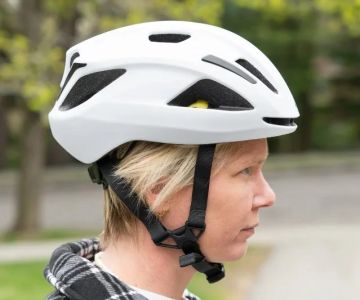
- Choosing the Right Gear for Your Bike Trip Abroad
- How to Ship Your Bike Internationally
- Understanding Customs Regulations for Bike Travel
- Real-Life Experiences of International Bike Trips
- Expert Tips for Planning Your Bike Trip Abroad



Discover the best cycling destinations in the U.S. for scenic family rides. Explore family-friendly bike trails, perfect for a fun and memorable outdoor adventure.

Discover how to use heart rate zones in your training for improved performance. Learn how to train smarter, not harder, by optimizing your workout with the right heart rate zones.

Learn how to identify and fix brake calipers that rub against the rotor, causing noise and poor braking performance. Follow these step-by-step instructions to keep your vehicle's brake system in top condition.

Learn how to ride safely on highways with narrow shoulders. Follow essential cycling tips and invest in the right gear to stay visible and secure while riding on busy roads.

Discover the best bike helmets for commuters in big cities. Learn about key features like MIPS, ventilation, and fit, and find the ideal helmet for your urban biking needs.

Learn how to stay warm and comfortable while cycling in cold weather. Discover the best layering strategies, cycling gloves, and shoe covers for winter cycling.
 Canyon Cycles4.0 (70 reviews)
Canyon Cycles4.0 (70 reviews) RECON MTB5.0 (1 reviews)
RECON MTB5.0 (1 reviews) Zyclefix5.0 (21 reviews)
Zyclefix5.0 (21 reviews) Redline E-Bikes, LLC4.0 (16 reviews)
Redline E-Bikes, LLC4.0 (16 reviews) Ordinary Bicycles4.0 (32 reviews)
Ordinary Bicycles4.0 (32 reviews) PedalJetz Ebikes4.0 (114 reviews)
PedalJetz Ebikes4.0 (114 reviews) How to Teach Kids to Ride a Bike: A Step-by-Step Guide for Parents
How to Teach Kids to Ride a Bike: A Step-by-Step Guide for Parents Tips for Riding on Busy City Streets: Smart Strategies for Urban Cyclists
Tips for Riding on Busy City Streets: Smart Strategies for Urban Cyclists Best US National Parks for Mountain Biking: Ride Epic Trails Across America
Best US National Parks for Mountain Biking: Ride Epic Trails Across America Best Aero Helmets for Time Trials and Racing
Best Aero Helmets for Time Trials and Racing How to Clean and Lubricate Your Bike Chain Like a Pro
How to Clean and Lubricate Your Bike Chain Like a Pro 10 Must-Have Items for Long-Distance Cycling Trips
10 Must-Have Items for Long-Distance Cycling Trips